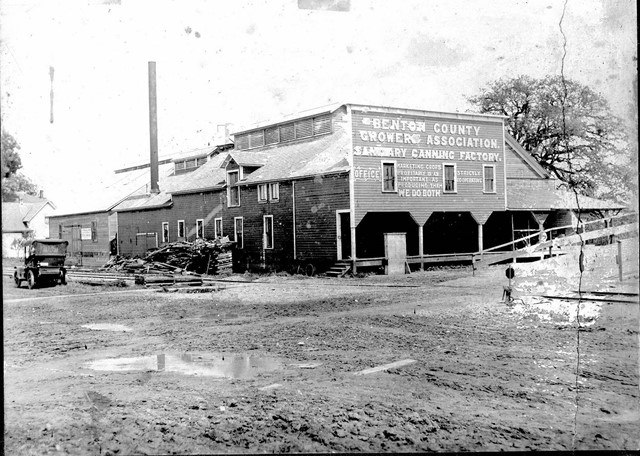The Corvallis Farmers’ Market for the better part of 35 years has operated between Riverfront Commemorative Park on the east and a mix of retail, restaurant and residential development on the west.
Our current layer of history offers echoes of a past that includes a river-focused industrial infrastructure, with houses on the west side.
Kayaks and canoes now ply the river that once was home to steamboats, ferries and even houseboats. Railroad tracks ran down what was alternatively called First or Water. Today next to the river is a linear park with plazas, a multimodal path and sidewalks.
In the 19th and 20th centuries, as now, commerce in food was a central theme. The Benton County Flouring Mills operated between Monroe and Jackson until it was consumed in a 1943 fire. This site is adjacent to a major section of the farmers’ market and across from the Water Street Market and the Jax Apartments.
North of Jackson, there was a Cauthorn grain warehouse. Just north of the Van Buren Bridge in the early 20th century, a cooperative canned produce from Benton County growers.
South of Madison, a Corvallis Creamery and later Medo-land Creamery operated on the east side. Medo-land eventually operated from the warehouse recently demolished to build the Gordon Hotel and Gordon Residences.
To learn more Riverfront history, stroll to Madison and First and then just south of Washington to see ceramic history signs. In addition to these three signs, there are two others that should return after bridge construction.
Market director Rebecca Landis co-presented a webinar, part of the Liz and Bob Frenkel Lecture Series, featuring the downtown Willamette Riverfront Parks. Later this summer, the video will be available on the library’s YouTube channel.
